Looking to explore the tart and tangy world of rhubarb? Dive into this comprehensive guide on everything you need to know about rhubarb, from its unique flavor profile and culinary uses to tips on buying, storing, and incorporating it into delicious recipes!
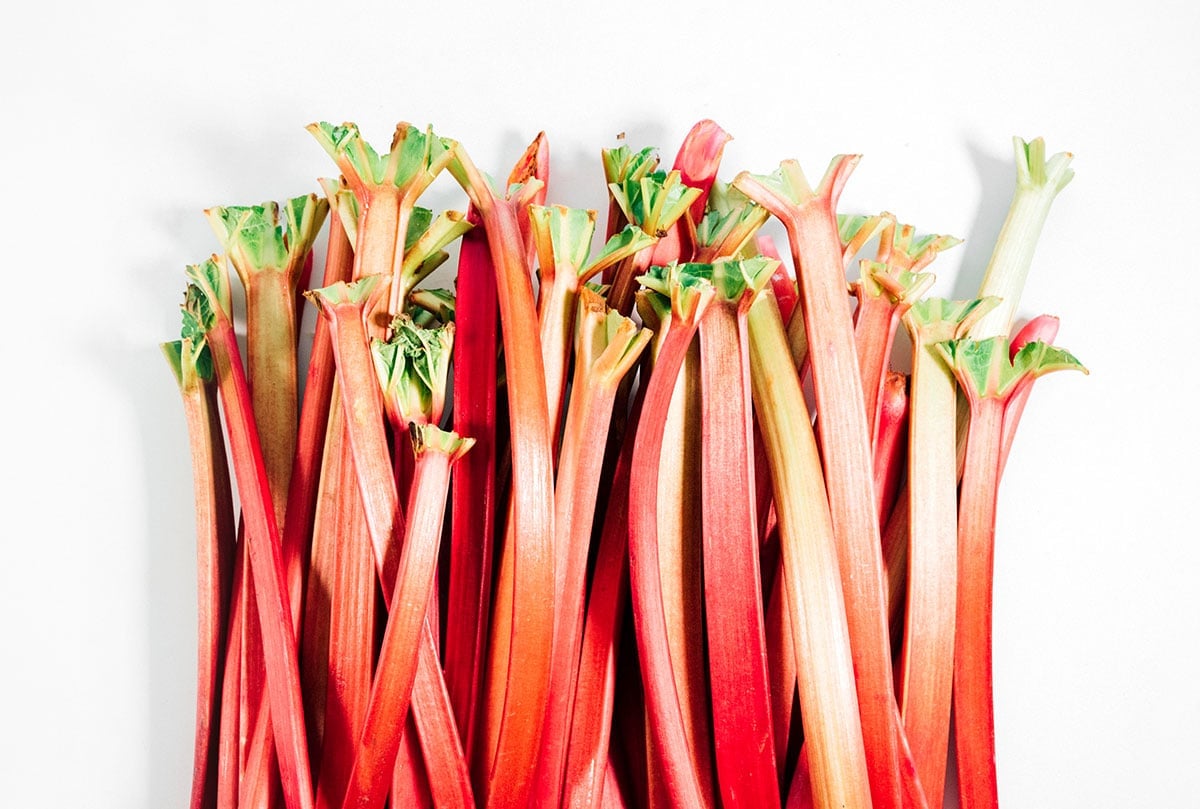
If I had to attribute my love of cooking to one ingredient, it would be rhubarb (why do you think I named my dog after it?). Growing up in Alaska, rhubarb grew like a weed in our neighborhood. But living on a a military base, many of our neighbors weren’t from the north so they didn’t know what goldmine was growing in their yard.
Enter: young Sarah. I’d go around harvesting all of the forgotten rhubarb in the neighborhood, stocking our freezer with bags and bags of the ruby red deliciousness (that I would later turn into rhubarb crisps and pies to share with the neighborhood).
- What Is Rhubarb?
- What Does Rhubarb Taste Like?
- What To Do With Rhubarb
- How To Buy Rhubarb
- How To Store Rhubarb
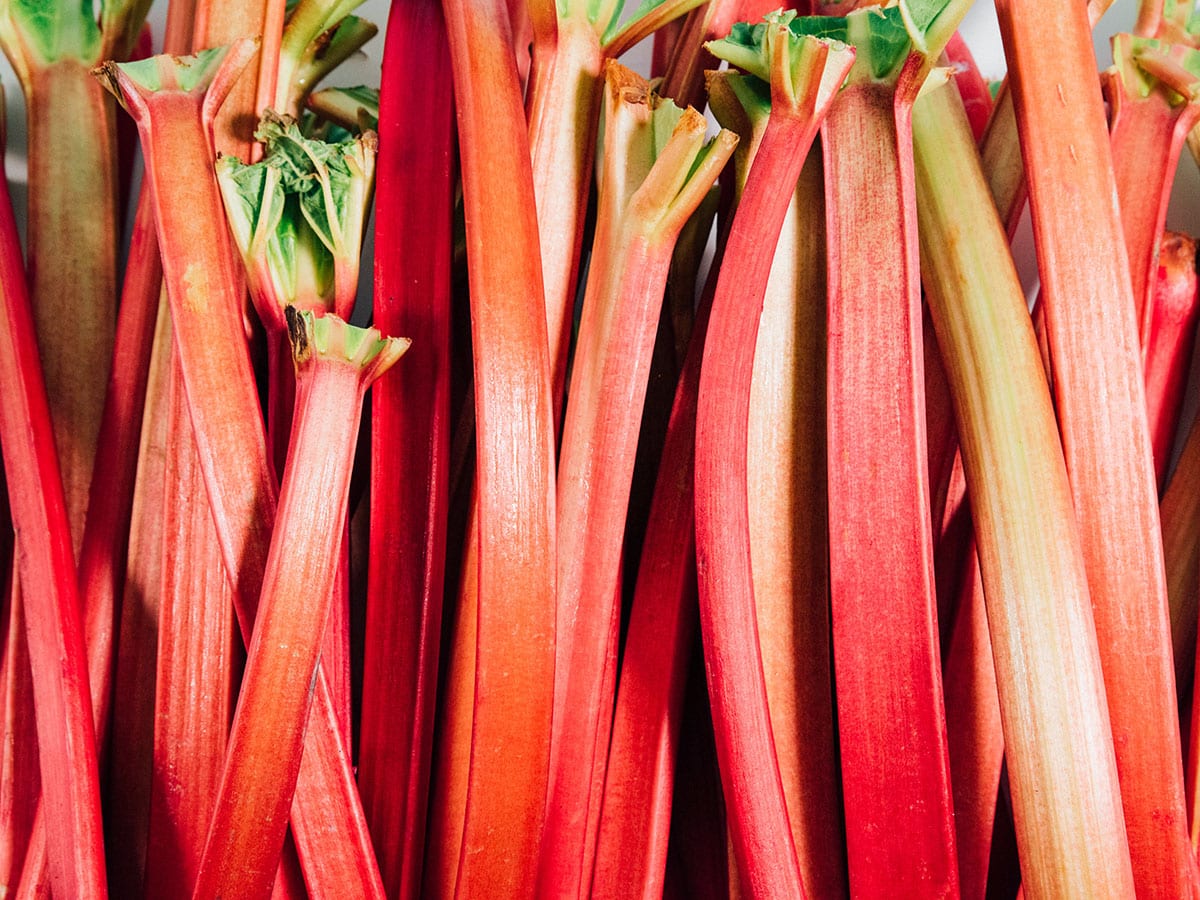
What Is Rhubarb?
So, what is rhubarb? Rhubarb is a vibrant and tangy vegetable (yes, it’s a vegetable, not a fruit!) that’s often mistaken for a fruit due to its common use in desserts.
Rhubarb stalks are usually pink or red with a very tart flavor that adds a delightful zing to both sweet and savory dishes. It’s like the sassy cousin of celery, bringing a unique twist to your summer dishes.
Is rhubarb a fruit or a vegetable?
Despite its culinary uses and resemblance to fruit, rhubarb is technically classified as a vegetable. Rhubarb doesn’t have any seeds, and doesn’t come from the flowering portion of a plant, which is how we classify fruits.
Which part of the rhubarb plant do you eat?
When it comes to rhubarb, it’s all about the stalks! The juicy stalks are the edible portion of the rhubarb plant. The leaves should be avoided as they contain high levels of oxalic acid, which can be toxic.
What’s the difference between rhubarb and chard?
Rhubarb and chard may look similar, but they have significant differences. Rhubarb is grown for its edible stalks, which are known for their tart flavor. Chard, on the other hand, is a leafy green vegetable, and its vibrant and tender leaves are the main focus when cooking. Chard leaves have a slightly earthy and bitter taste, which mellows when cooked.
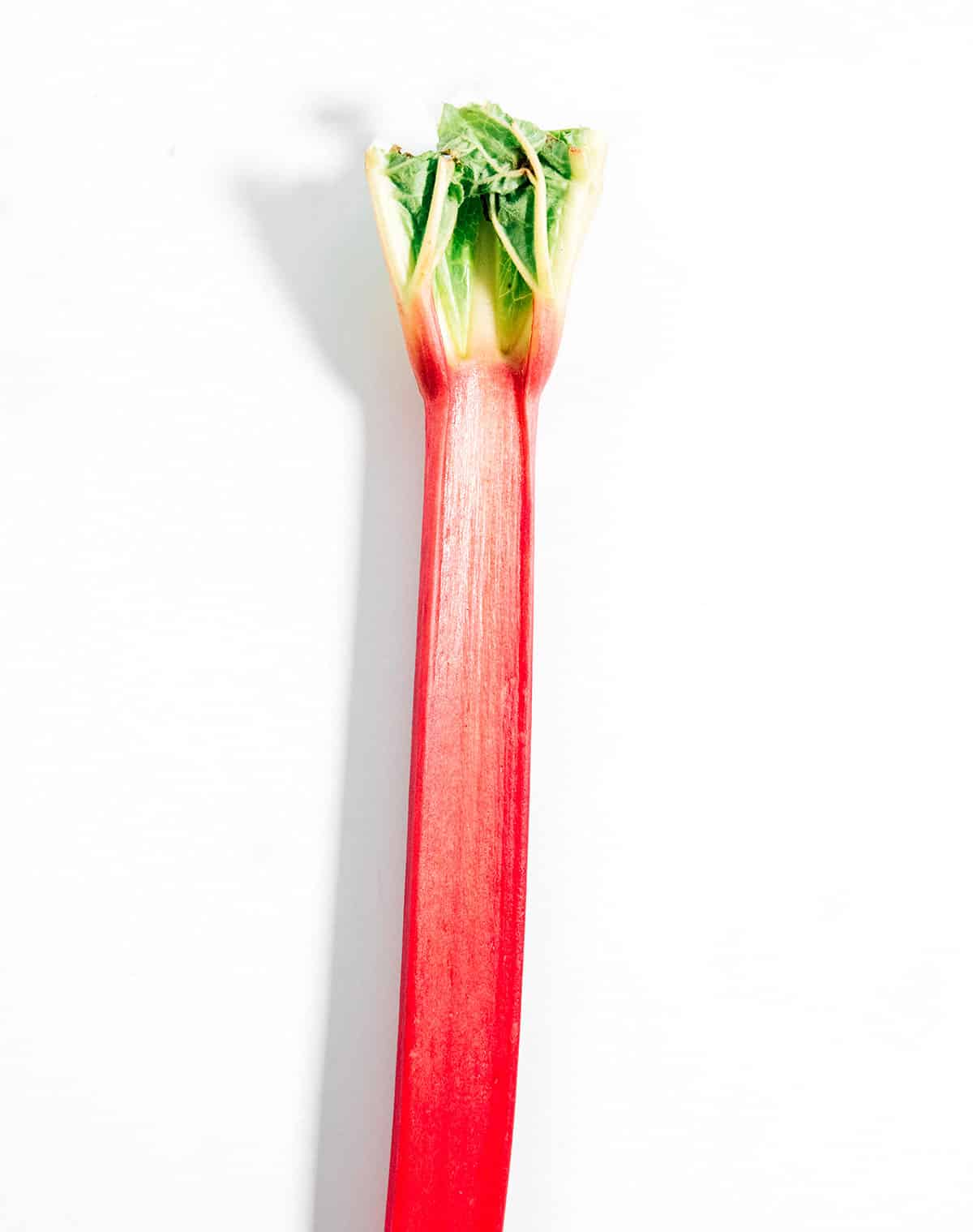
What Does Rhubarb Taste Like?
Rhubarb has a unique and distinct taste that sets it apart from other fruits and vegetables. Its flavor is often described as tart, tangy, and slightly sour, with a hint of sweetness.
When cooked, rhubarb softens and its tartness becomes more pronounced, balancing beautifully with sweeteners like sugar or other fruits, like strawberries. The flavor profile of rhubarb makes it a versatile ingredient in both sweet and savory dishes. Whether it’s used in pies, crumbles, or sauces, rhubarb adds a delightful and refreshing twist to any recipe.
What To Do With Rhubarb
When it comes to cooking rhubarb, the possibilities are endless. From classic rhubarb pies and crumbles to refreshing rhubarb compotes and jams, there are plenty of sweet treats to explore.
Pro-Tip: Pair rhubarb with sweet fruits like strawberries and cherries to reduce the amount of added sugar you need in a recipe.
For those who prefer savory dishes, rhubarb can be incorporated into chutneys, salsas, and even used as a unique addition to salads (see pickled rhubarb 👈)
The tartness of rhubarb adds a delightful twist to cocktails and beverages as well. With its distinct flavor and versatility, rhubarb opens up a world of culinary creativity, allowing you to enjoy its unique taste in both traditional and innovative recipes.
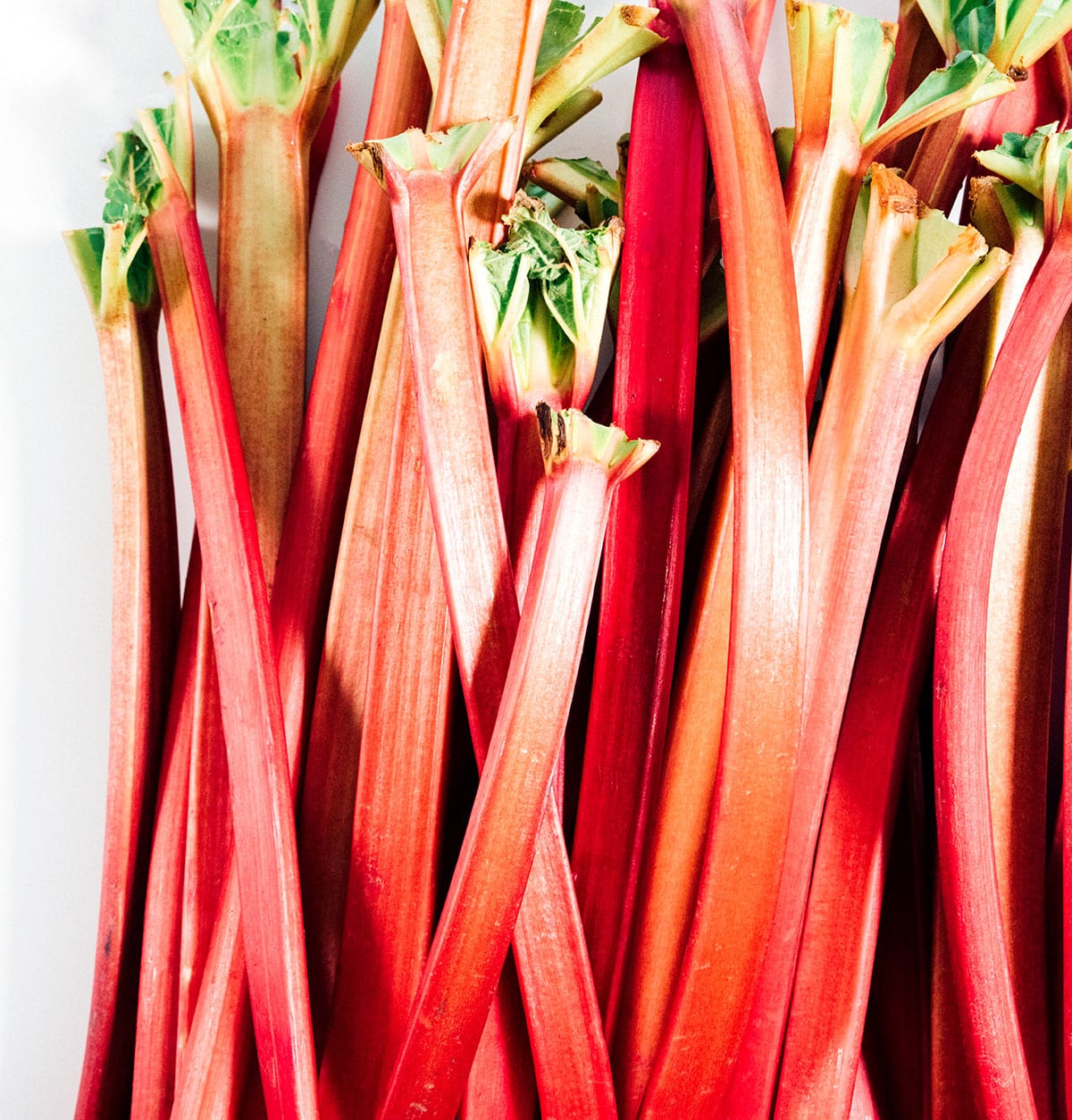
How To Buy Rhubarb
When buying rhubarb, look for stalks that are firm, crisp, and brightly colored. Avoid any stalks that are limp, wilted, or have blemishes or spots.
What color should rhubarb be?
The color of rhubarb can vary from pale green to deep red, depending on the variety, but choose stalks that are vibrant and uniform in color.
How big should rhubarb stalks be?
The size of the stalks doesn’t necessarily indicate quality, as both thin and thick stalks can be equally delicious. Thicker stalks, however, tend to be more fibrous and might require longer cooking times.
When is rhubarb in season?
Rhubarb is typically in season during the spring and early summer months, with the peak harvest period varying depending on the region. Generally, you can find fresh rhubarb at its best from April to June.
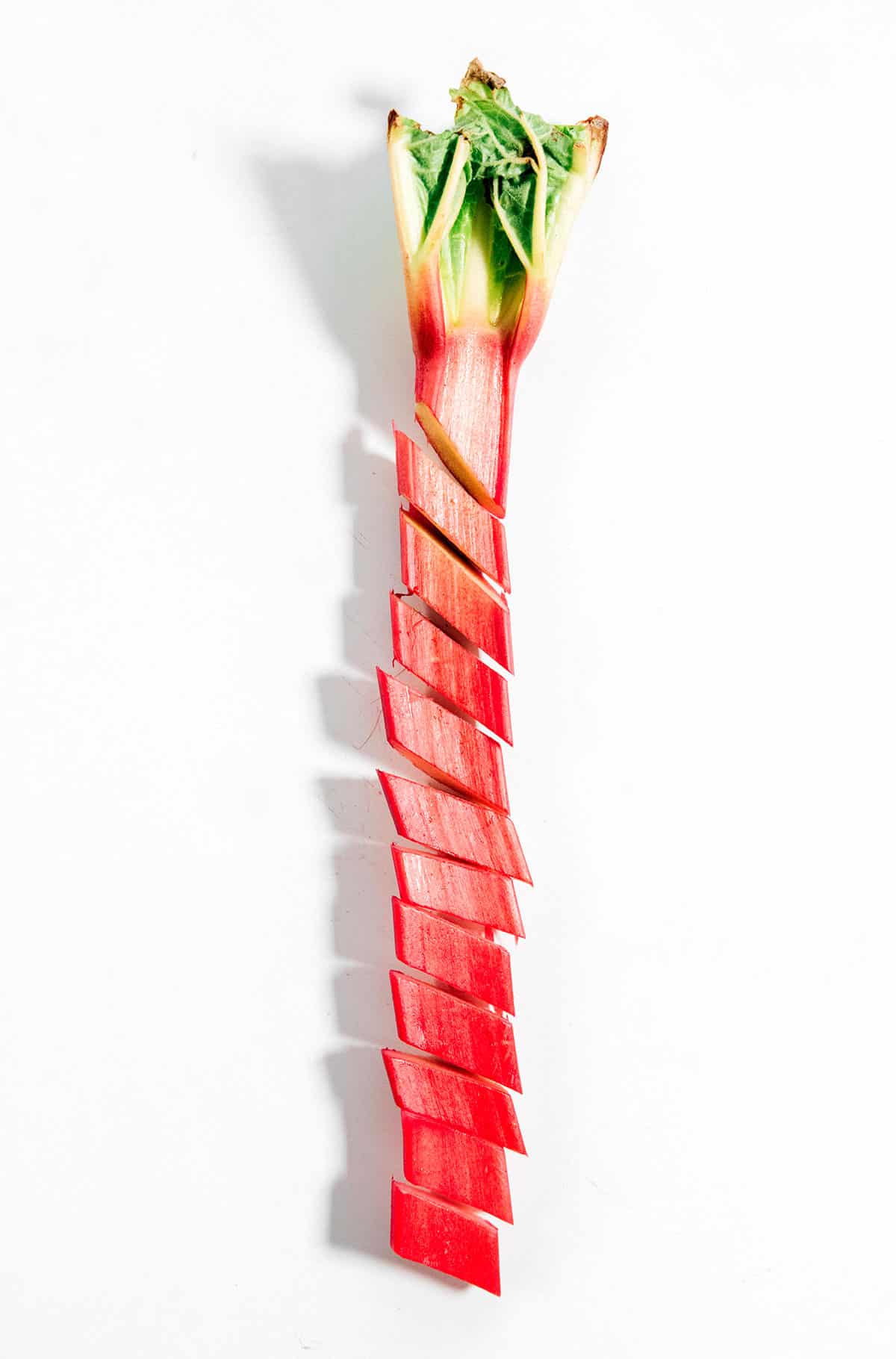
How To Store Rhubarb
When you get your hands on rhubarb, be sure to store it correctly to preserve that texture and flavor for as long as possible!
- Start by removing any leaves attached to the stalks, as they can draw moisture from the stalks and cause them to wilt.
- Rinse the stalks gently to remove any dirt or debris, then pat them dry with a kitchen towel.
- Place the rhubarb stalks in an open plastic bag or wrap them loosely in aluminum foil to maintain moisture. Store the wrapped rhubarb in the refrigerator’s vegetable drawer, where it can stay fresh for up to one week. The longer you store rhubarb, the more soft the stalks will become.
Tip: Avoid storing rhubarb near ethylene-producing fruits like apples or bananas, as ethylene can accelerate its spoilage.
Need to store rhubarb for longer than a few days? Grab our guide to freezing rhubarb for up to a year!
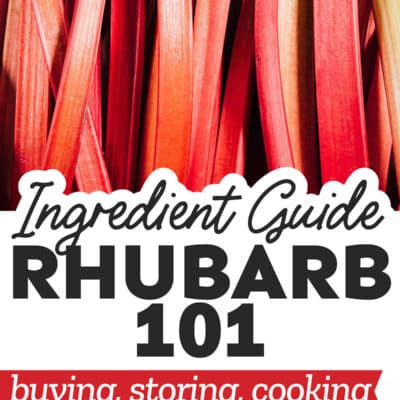
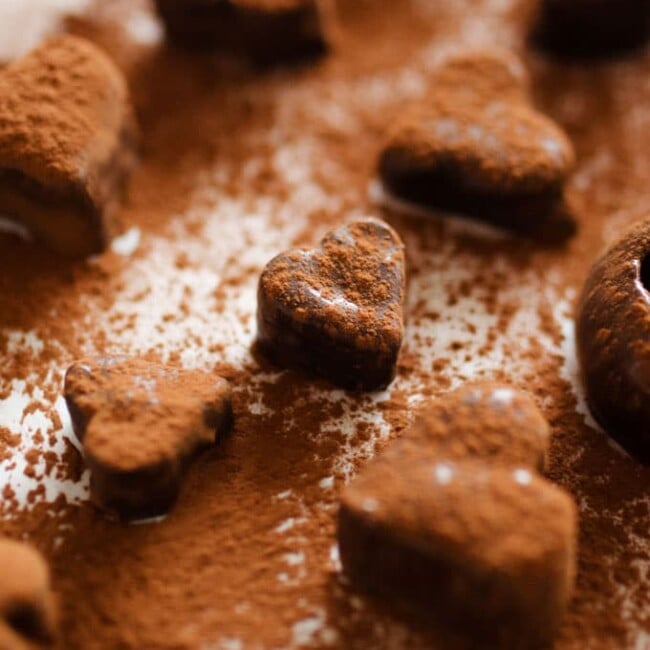
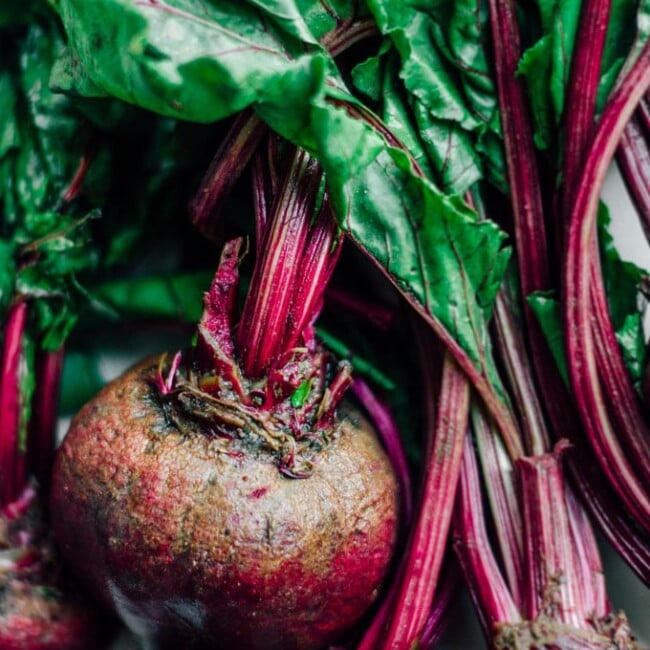
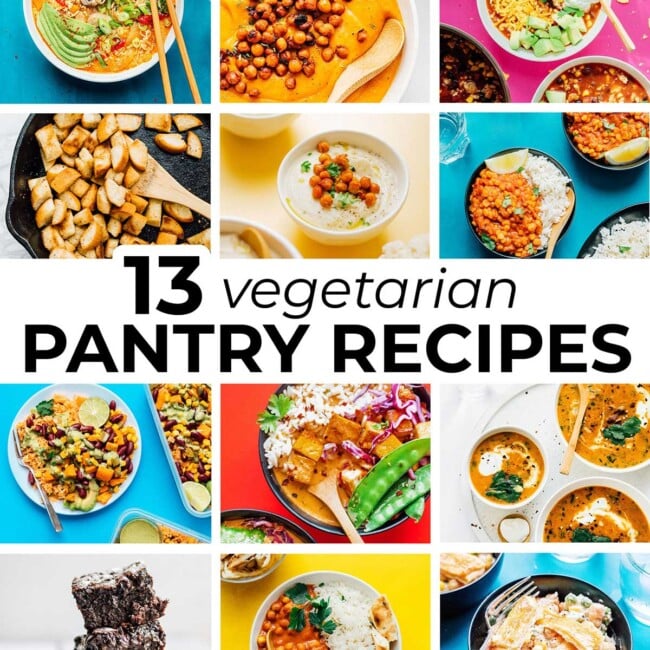
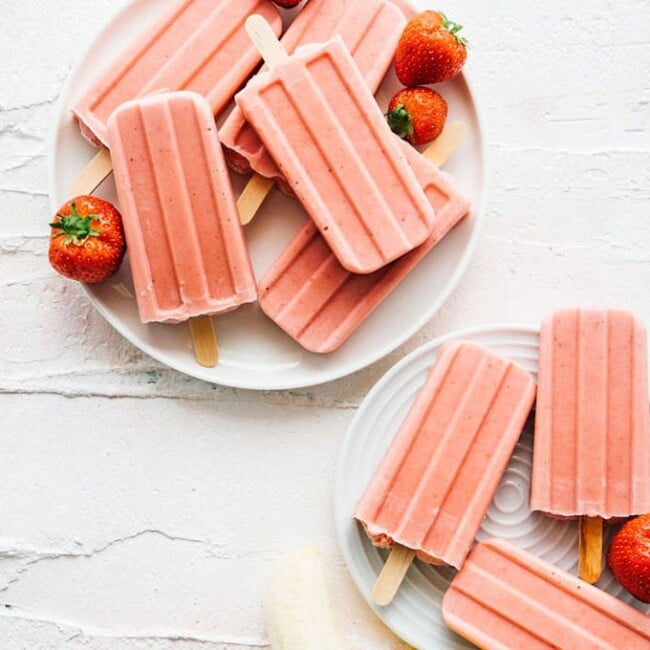
Anni says
My favorite use of Rhubarb: Cut the red part into 1″ pieces.
Boil in water (1 part rhubarb to 2 part water) cook until the rhubarb
very soft. Strain in colander.
Into the juice put cleaned and cut into 1/2″ pieces of strawberries,
amount more or less same as rhubarb, bring to a boil for a couple of
minutes, add sweetener as desired.
Use as a hot or cold summer soup or add some potato or corn starch
.Cool in fridge for a couple of hours, either in individually glasses or in
a serving bowl. When settled serve with half& half or cream.
This is the famous Danish dish: Rodgrod med fold.
Sarah Bond says
Oh that sounds so delicious I’ll have to try it!!
Aileen says
Sarah,
Do you have a recipe for rhubarb custard crumble pie?
Sarah Bond says
I don’t but it sounds delicious!